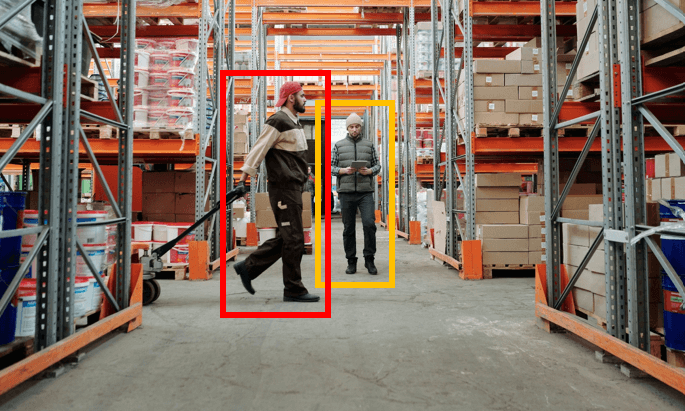Across warehouses, depots, container yards, and distribution centres, forklifts remain indispensable for moving goods efficiently, but they can also pose significant risks to pedestrian workers. According to HSE statistics, forklift-related incidents are a leading cause of damage to goods, building infrastructure, and workplace injuries, with pedestrians often bearing the brunt of collisions with forklifts. Fortunately, many of these incidents are preventable through a combination of awareness, technology, and well-implemented safety measures.
Understanding Forklift-Pedestrian Accident Risks
Forklift-pedestrian incidents often occur due to a number of factors, such as limited visibility, blind spots, noisy environments, near-silent electric trucks, excessive forklift speed, or simple human error. A lack of effective safety measures, such as forklift warning lights and speed control systems, can also increase the likelihood of collisions.
Pedestrians are particularly vulnerable in materials handling environments because they have less protection than forklift operators and may be unaware of the forklift’s path and operational movements, causing them to come in close contact and risk the potential of a collision.
Our 8 Vital Forklift Safety Tips for Pedestrians
The following eight tips are designed to reduce risks and protect forklift drivers and pedestrians alike. Implementing these safety measures could mean the difference between a safe workday and a serious accident.
1. Establish Clear Pedestrian & Forklift Segregation Zones
Creating physical separation between forklift routes and pedestrian walkways is one of the most effective ways to prevent incidents. Use painted floor lines, guardrails, barriers, and designated crossing points to keep traffic streams distinct and create a safe zone for pedestrians.
2. Implement Visual Warning Systems for Pedestrians
Warning lights provide clear visual cues to pedestrians, helping them identify safe distances from moving forklifts. Additionally, Blue and Red LED Alerts can project bright, highly visible safety zones around a working forklift. For even greater protection, a perimeter system such as a Red Line Alert can help ensure pedestrians are kept away from hazard zones, as it is designed to create a buffer zone around the forklift that highlights the area for pedestrians to avoid.
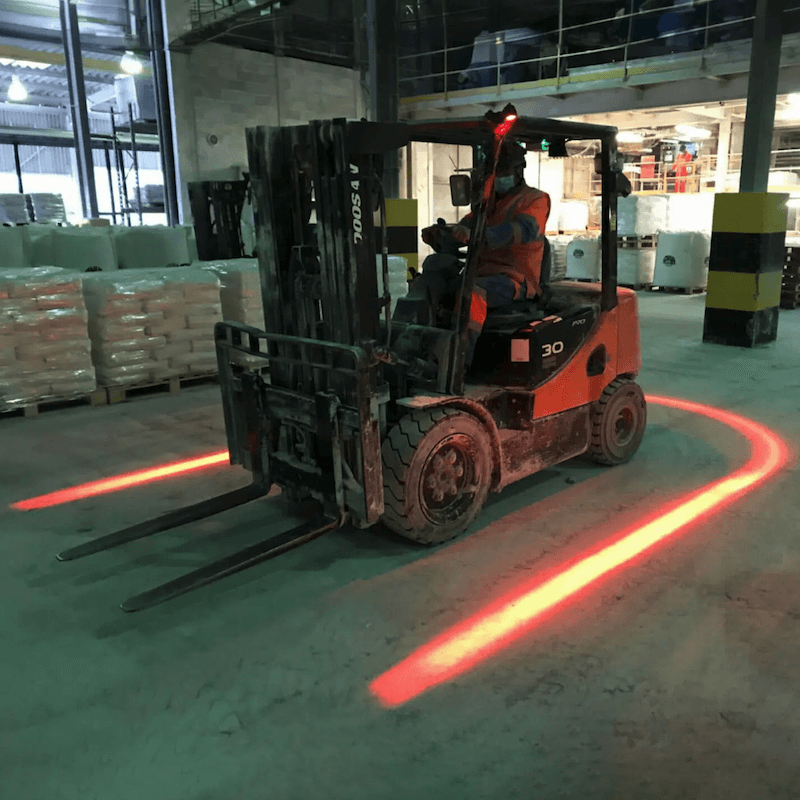
3. Utilise Proximity Warning Systems
Forklift proximity warning systems automatically detect pedestrians within forklift operating zones, alerting both the operator and the pedestrian to the hazard. This early warning can be crucial in preventing collisions in busy areas where forklifts and pedestrians are often working in close proximity. Additionally, proximity warning systems can also be very effective for forklift trucks working in areas where pedestrians typically do not have access, as drivers could potentially become complacent, increasing the risks to pedestrians.
4. High-Visibility Personal Protective Equipment
Mandatory high-visibility vests or jackets should be worn by all pedestrians working in and around the warehouse or distribution centre, and in particular, in areas where forklifts are operational. Visitors should be provided with temporary PPE and given a safety briefing before entering to ensure they adhere to all safety procedures while on site. Visitors could benefit from wearing different coloured PPE than employees, as they are at a higher risk of an incident than those working daily on site.
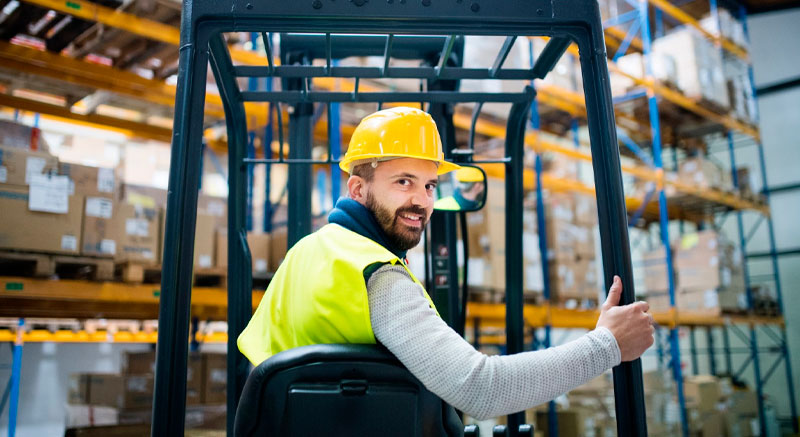
5. Implement Collision Avoidance Technology
ACAS (Active Collision Avoidance Systems) detect potential collisions and automatically intervene, reducing the reliance on human reaction times. This technology, where the system automatically slows the forklift while simultaneously alerting both drivers and pedestrians, can be vital in safeguarding workers, particularly in high-traffic areas.
6. Ensure Clear Forklift Operator Visibility & Eliminate Blind Spots
Improving visibility can dramatically reduce the risk of accidents in and around warehouses, distribution centres, and depots. Forklift camera systems are designed to give operators a clear view of their surroundings, while strategic warehouse layout changes can help eliminate blind corners. For more on forklift operator visibility and how to eliminate blind spots, see our guide to forklift blind spot safety.
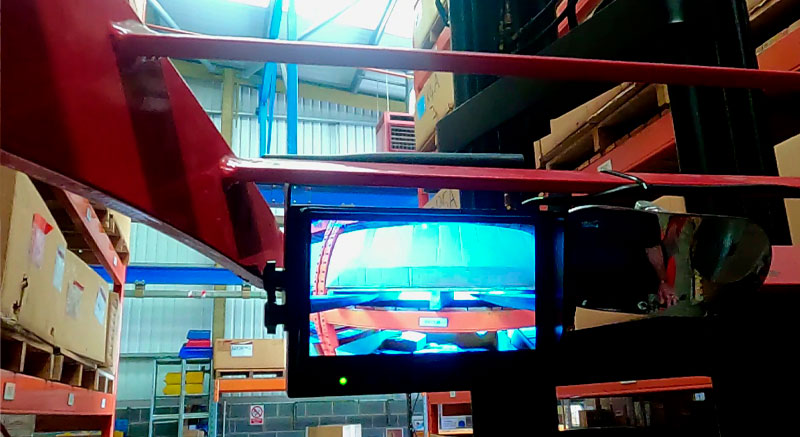
7. Control Forklift Operating Speeds in Pedestrian Areas
Speed management is crucial in shared environments to maintain a safe working environment, yet not hinder productivity across material handling tasks. Technologies such as radar speed zoning systems and other speed control solutions can enforce safe forklift speed limits automatically, eliminating the potential risk of driver error or non-adherence to speed zone limits. Learn more about managing forklift speed limits.
8. Establish Comprehensive Safety Training & Protocols
All staff should receive pedestrian safety training, including hazard recognition, right-of-way rules, and safe walking practices. Visitors should be given a clear induction and briefed on site-specific hazards before entry, as well as being provided with suitable safety workwear such as Hi-Viz jackets and hard hats where necessary.
Creating a Comprehensive Pedestrian Safety Strategy
The safest warehouse environments build a comprehensive, layered safety strategy that addresses risks from multiple angles.
Key takeaways for implementing effective pedestrian safety measures:
- Identify high-risk zones by mapping pedestrian and forklift movements throughout the site, both internally and externally, where relevant.
- Apply physical separation wherever possible, using barriers, floor markings, and designated walkways.
- Integrate technology-driven alerts and controls such as visual warning lights, proximity sensors, and speed management systems.
- Standardise PPE requirements for both staff and visitors to improve visibility.
- Commit to ongoing training and reviews to adapt as workflows and layouts change and support continuous improvement.
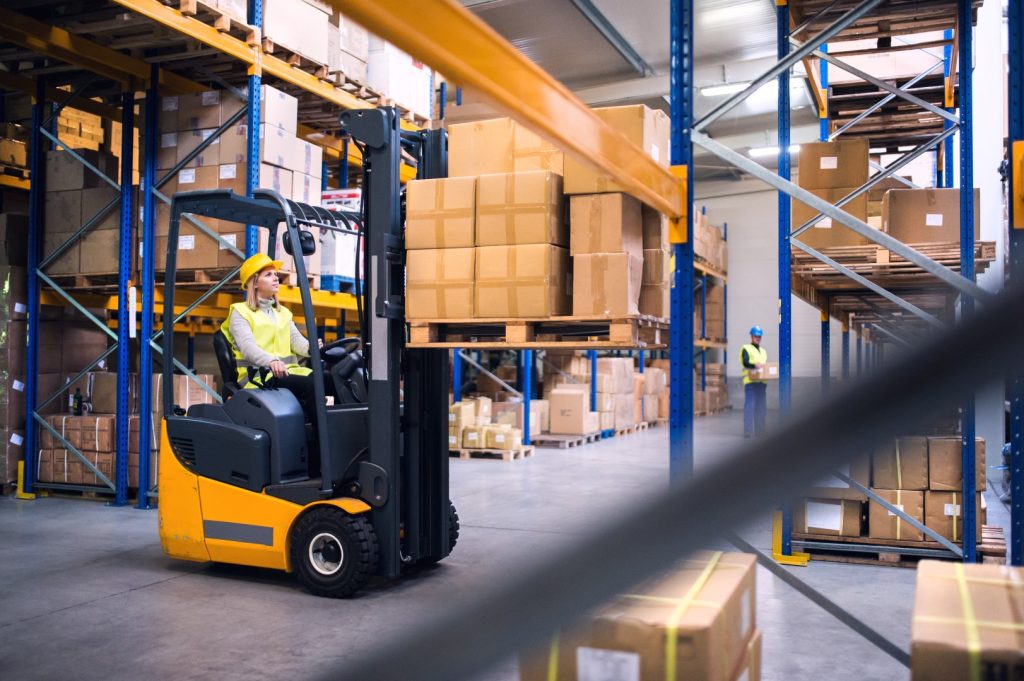
Why combining multiple safety measures creates layered protection
No single safety measure can account for all potential hazards. For example, a visual warning light may help prevent collisions in open areas, but it won’t stop a distracted pedestrian in a blind spot. That’s where technologies such as proximity detection and collision avoidance systems add another level of safety.
By combining physical controls, technological solutions, and comprehensive training, operators can put in place a layered approach to ensure that every eventuality is covered, should one system fail, or if a forklift driver or a pedestrian makes a mistake.
How Transmon’s technology solutions support the 8 essential tips
- Segregation zones: Physical layouts enhanced by visual markers and structures such as barriers.
- Visual warning systems: Blue/Red LED Spot Alerts, Red Line Alert systems, and warning lights, to define safety boundaries.
- Proximity detection: Proximity warning systems to alert both operators and pedestrians.
- High-visibility PPE: Mandatory high-visibility vests, safety shoes, and hard hats to safeguard pedestrians and visitors.
- Collision avoidance: Active Collision Avoidance technology to intervene before contact occurs.
- Operator visibility: Forklift cameras to eliminate blind spots.
- Speed control: Radar-based speed zoning to enforce limits in pedestrian-heavy areas.
- Training reinforcement: Technology-backed policies and comprehensive training that embeds safe practices in daily operations.
Your next step toward a safer workplace begins with adopting a comprehensive strategy for forklift pedestrian safety. Whilst each warehouse and distribution centre is unique in its operations and layout, pedestrian safety is paramount and needs to be safeguarded. By adopting a multi-layered approach, fully supported by Transmon’s proven safety-enhancing technologies, you can significantly reduce the risk of forklift-pedestrian incidents while maintaining productivity.
Ready to start your journey towards enhanced forklift pedestrian safety? Contact the expert team at Transmon Engineering today. We’ll be delighted to discuss on 0116 260 4200 the right mix of solutions for your site and operations.


